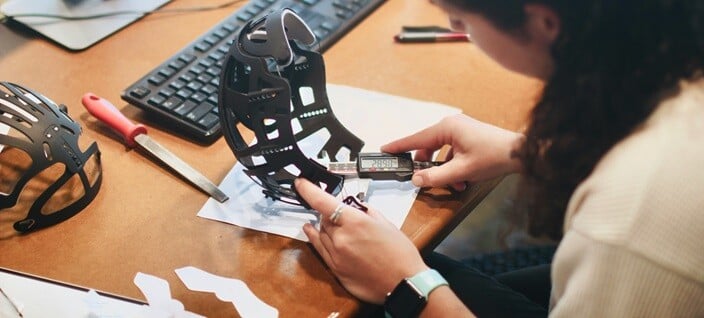ME and ID working together in harmony
Yin-yang is a Chinese philosophical concept that describes opposite but interconnected forces. This pretty much sums up the relationship between industrial design and mechanical engineering. Industrial design (ID) is the yin, concerned with how things look and how people experience a product; industrial designers lie on the spectrum somewhere between artist and engineer, and individual designers operate anywhere along that spectrum. Meanwhile, mechanical engineering (ME) is the yang, dealing with the technical and functional aspects of making a manufacturable product. In a balance of form versus function, there’s going to be some headbutting; however, both are needed to create innovative and well-designed products.
When a company sets out to create a new product, they usually hire out the industrial design to an outside firm or consultant, who produces a design concept and creates a vision for what the final product will look like. It’s then up to engineering to cram whatever parts go inside and handle the manufacturing details — sometimes the industrial design concept can’t fit all of the parts, or maybe it ultimately isn’t as manufacturable as believed. On top of that, these are usually either different companies or departments, and it starts to become obvious why the two can have such disdain for each other.

There’s an area of overlap in the handoff from ID to ME where things become pointed. When designers pitch grandiose design concepts to a roundtable of seasoned engineers, what are some manufacturing or cost points that will turn their heads? When an engineer receives a good-looking but problematic design concept from a naïve industrial designer, how can they be guided in the right direction without compromising their vision?
With ME and ID under one roof at Sherpa Design, we’ve come across these problems from both sides of the table. With industrial Design and Mechanical Engineering living together at Sherpa, we’ve identified a few ways of streamlining the ID/ME handoff:
1. Align with engineering at the beginning of the project.
When a project kicks off, we usually have a roundtable discussion between design, engineering, and management on what each of our expectations are going into the project, what challenges we anticipate, and what our initial thoughts are. For design, we usually start with which materials and processes we foresee using, and verify our design constraints with engineering.

2. Bring engineering into the design process.
When we go through our second round of internal concept review, we bring the project engineers in to give their thoughts and opinions on our early concepts. We keep an open mind with their feedback, as it allows us to incorporate their functionality requirements into our ideation.3. Review final concepts with engineering.
As we downselect concepts, we run our final few past engineering for their input on function, manufacturing, and assembly. This can help us make some important decisions when downselecting concepts, helps us identify potentially problematic areas early, and ensures that the work we show clients is backed by the confidence of our engineers.
4. Industrial design provides oversight.
Once the design concept has been finalized, we create an exterior appearance model to hand off to mechanical engineering. Once engineering begins working their magic, industrial design reviews the model’s progress every few days to stay updated on its development, and be there to help with any challenges that might come up. In this way, engineering participates early in the design process, and industrial design is involved through to manufacturing. Because of engineering’s early engagement in the design process, there should be very few technical issues in the design engineering development; however, when surprises do happen, ME and ID have enough rapport to come up with a solution together that not only solves the problem, but also preserves our design intent. In the process, ID becomes more knowledgeable of ME’s needs and vise-versa. Over time, this has led to a group of mechanical engineers that strive to meet ID’s design goals, and industrial designers creating concepts with ME’s manufacturing and functionality needs in mind from the get-go.
In this way, engineering participates early in the design process, and industrial design is involved through to manufacturing. Because of engineering’s early engagement in the design process, there should be very few technical issues in the design engineering development; however, when surprises do happen, ME and ID have enough rapport to come up with a solution together that not only solves the problem, but also preserves our design intent. In the process, ID becomes more knowledgeable of ME’s needs and vise-versa. Over time, this has led to a group of mechanical engineers that strive to meet ID’s design goals, and industrial designers creating concepts with ME’s manufacturing and functionality needs in mind from the get-go.
Just as yin-yang is represented as a black area and a white area in a circle, there are also two dots, representing that one is within the other. Balance comes when ID and ME collaborate closely and understand each other, and that’s where great, innovative products are made.
Need help with your product development journey?

